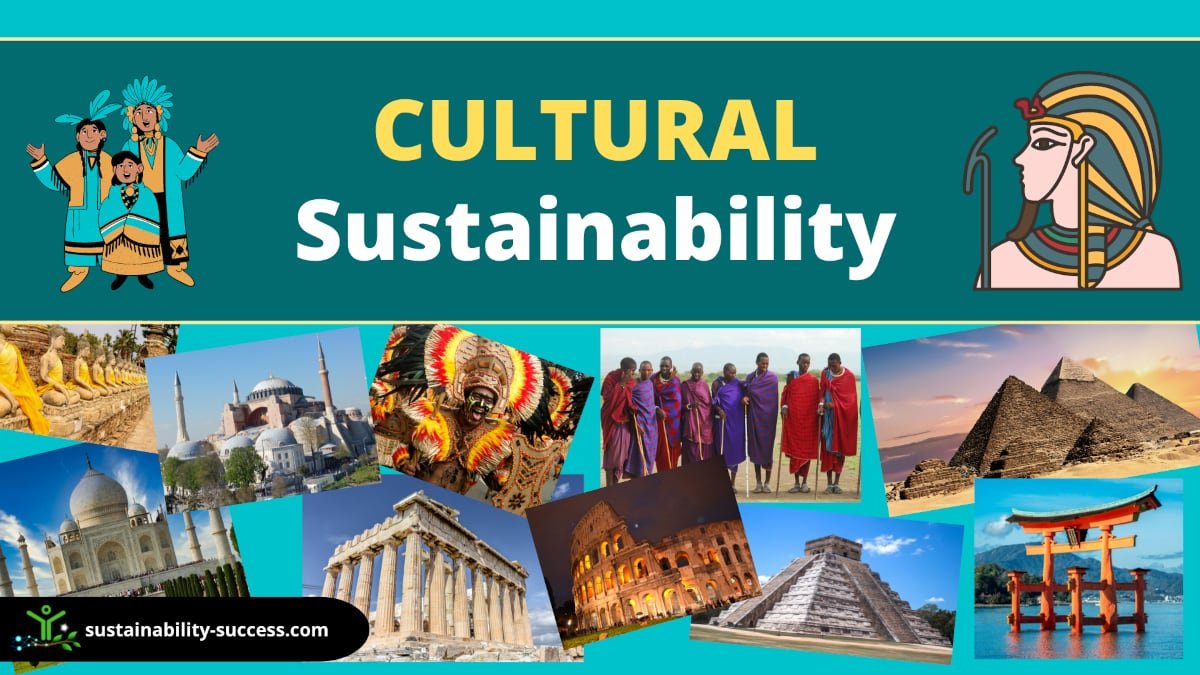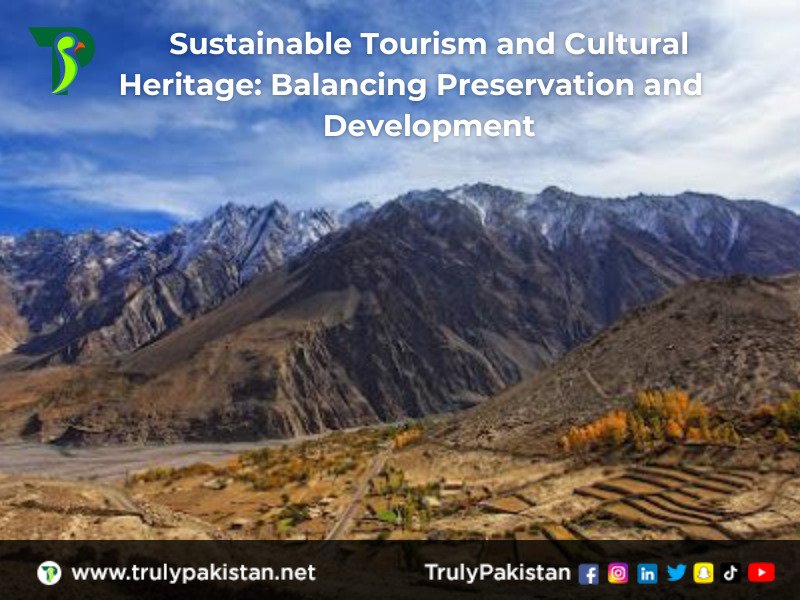
Cultural Sustainability: Preserving Our Shared Heritage for Future Generations
Imagine a world without stories, without unique dances, without ancient buildings, or the wisdom passed down through generations. What would we lose? A fundamental part of who we are, where we come from, and how we connect with each other. This is where Cultural Sustainability comes in – it’s about making sure our invaluable heritage, in all its forms, survives and thrives for centuries to come.
In an ever-changing world, it’s easy for traditions, languages, and historical sites to fade away. But just like we strive to protect our planet’s environment, it’s equally vital to safeguard our cultural environment. This article will explore what cultural sustainability truly means, why preserving heritage is so important, the challenges we face, and the practical steps we can all take to ensure our cultural treasures endure.
What is Cultural Sustainability? Understanding the Core Idea
At its heart, cultural sustainability is about keeping our unique ways of life, our knowledge, and our artistic expressions alive and vibrant. It’s not just about freezing culture in time, like a museum exhibit. Instead, it’s about nurturing it so it can adapt, evolve, and continue to be relevant to new generations.
Think of it like a family recipe: you want to pass it down, but you also want it to be enjoyed and perhaps even slightly adapted by those who inherit it, ensuring it continues to be made and loved.
Cultural sustainability ensures that:
- Cultural identity is maintained and celebrated.
- Traditional knowledge and skills are not lost.
- Diverse cultural expressions continue to flourish worldwide.
- Heritage sites and artifacts are protected and accessible.
- Future generations can connect with their roots and learn from the past.
It’s a dynamic process that recognizes culture as a living, breathing entity that needs care, respect, and active participation to endure.
Why is Preserving Heritage So Important? The Benefits We Gain
You might wonder, why put so much effort into preserving old songs, stories, or buildings when there are so many modern challenges? The truth is, the benefits of heritage preservation stretch far beyond mere nostalgia. They touch every aspect of our lives, from our sense of self to our economic well-being.
Here are some key reasons why safeguarding our heritage is crucial:
- A Strong Sense of Identity and Belonging: Our heritage connects us to our ancestors and our community. It tells us who we are, where we come from, and what makes our group unique. Losing this connection can lead to a loss of identity and a feeling of disconnection.
- Learning from the Past: History isn’t just a collection of dates; it’s a reservoir of human experience. By studying our heritage, we learn about triumphs, mistakes, resilience, and creativity. This knowledge helps us make better decisions for the future.
- Economic Opportunities: Heritage sites, traditional crafts, and cultural festivals often attract tourists, creating jobs and supporting local economies. Think of the impact of historical cities, unique artisan markets, or vibrant cultural performances.
- Fueling Creativity and Innovation: Many modern art forms, designs, and ideas draw inspiration from traditional techniques and ancient wisdom. Preserving heritage provides a rich wellspring for new creative expressions.
- Promoting Understanding and Peace: Learning about different cultures and their heritage fosters empathy and respect. It helps us appreciate the diversity of human experience and can bridge divides between communities and nations.
- Environmental Stewardship: Often, traditional knowledge systems hold valuable insights into sustainable living and managing natural resources, connecting cultural heritage with environmental protection.
- Resilience and Well-being: In times of change or crisis, cultural heritage can be a source of comfort, stability, and strength for communities, helping them rebuild and recover.
Without active cultural preservation, we risk losing irreplaceable knowledge, unique perspectives, and the very fabric that weaves together human history and identity.
Types of Heritage We Preserve: Tangible vs. Intangible
When we talk about "heritage," it’s easy to think only of old buildings or artifacts. However, heritage is much broader than that. To truly understand cultural sustainability, it’s important to distinguish between two main types:
1. Tangible Heritage
This refers to the things you can touch, see, and physically experience. It’s the physical evidence of human activity and creativity throughout history.
Examples of Tangible Heritage include:
- Historical Sites: Ancient ruins (e.g., Machu Picchu, the Roman Colosseum), battlefields, archaeological digs.
- Buildings and Architecture: Castles, cathedrals, traditional houses, iconic landmarks.
- Artifacts: Tools, pottery, sculptures, clothing, ancient manuscripts, artworks found in museums.
- Natural Landscapes with Cultural Significance: Sacred mountains, traditional fishing grounds, ancient agricultural terraces.
Preserving tangible heritage often involves conservation, restoration, and careful management to prevent decay or destruction.
2. Intangible Heritage
This is often described as the "living heritage" – the practices, representations, expressions, knowledge, and skills that communities recognize as part of their cultural heritage. You can’t touch it, but you can experience it, learn it, and pass it on. It’s dynamic and constantly evolving.
Examples of Intangible Heritage include:
- Oral Traditions and Expressions: Stories, myths, poetry, proverbs, lullabies.
- Performing Arts: Traditional music, dance, theatre, rituals.
- Social Practices, Rituals, and Festive Events: Ceremonies, festivals, traditional games, social customs.
- Knowledge and Practices Concerning Nature and the Universe: Traditional medicine, indigenous farming techniques, astronomical knowledge, spiritual beliefs connected to nature.
- Traditional Craftsmanship: Skills involved in making traditional textiles, pottery, woodwork, jewelry, or food.
- Languages: The words, grammar, and expressions that carry a community’s worldview.
Safeguarding intangible heritage often involves documentation, education, transmission from generation to generation, and creating environments where these practices can continue to thrive. It’s about ensuring the doing and the knowing continue.
Both tangible and intangible heritage are deeply interconnected. A traditional dance (intangible) might be performed in a specific historical building (tangible), or a traditional craft (intangible) might produce a unique artifact (tangible). Protecting one often requires understanding and supporting the other.
Challenges to Cultural Sustainability: Threats to Our Heritage
Despite its immense value, cultural heritage faces numerous threats in the modern world. Understanding these challenges is the first step towards effective heritage preservation.
- Modernization and Globalization: The rapid spread of global trends can sometimes overshadow local customs, languages, and traditional ways of life, leading to their decline.
- Lack of Awareness and Education: If people don’t understand the value of their own heritage, they are less likely to protect it. Younger generations might not be exposed to traditional practices.
- Urbanization and Development: Rapid growth of cities can lead to the destruction of historical buildings, archaeological sites, and traditional landscapes to make way for new infrastructure.
- Climate Change and Natural Disasters: Rising sea levels, extreme weather events, and increased natural disasters threaten historical coastal cities, ancient ruins, and fragile ecosystems tied to cultural practices.
- Conflict and War: Armed conflicts are devastating for cultural heritage, leading to intentional destruction, looting, and neglect of invaluable sites and artifacts.
- Economic Pressures: Communities facing poverty might prioritize immediate survival over cultural preservation, or cultural assets might be exploited for short-term gain without sustainable practices.
- Loss of Oral Traditions and Languages: As elders pass away without passing on their knowledge, and dominant languages take over, invaluable stories, songs, and entire worldviews can disappear forever.
- Lack of Legal Protection and Funding: Many countries lack adequate laws to protect cultural heritage, or the funds to implement preservation efforts effectively.
- Mass Tourism (Unsustainable Tourism): While tourism can bring economic benefits, uncontrolled or irresponsible tourism can damage fragile sites, disrupt local communities, and commodify cultural practices, stripping them of their true meaning.
These challenges highlight the urgent need for comprehensive and collaborative efforts to ensure the long-term survival of our shared heritage.
Strategies for Preserving Our Heritage: Practical Steps for Cultural Sustainability
Fortunately, there are many proactive and effective ways to combat the threats to cultural heritage. Cultural sustainability initiatives involve a blend of traditional wisdom and modern innovation.
1. Community Involvement and Empowerment
- Local Ownership: The people who live with and practice the heritage are its primary custodians. Empowering local communities to lead preservation efforts is crucial.
- Intergenerational Dialogue: Creating opportunities for elders to share their knowledge and skills with younger generations (e.g., storytelling sessions, craft workshops).
- Community Mapping: Identifying and documenting local heritage assets, both tangible and intangible, by and for the community.
2. Education and Awareness
- Integrating Heritage into School Curricula: Teaching children about their local history, traditional arts, and cultural practices from a young age.
- Public Awareness Campaigns: Using media, events, and workshops to inform the broader public about the value and importance of cultural heritage.
- Museums and Cultural Centers: These institutions play a vital role in showcasing, researching, and educating the public about heritage.
3. Digital Preservation and Documentation
- Digitization: Creating digital copies of historical documents, photographs, audio recordings of oral histories, and videos of performances. This safeguards against physical loss.
- Online Databases and Archives: Making cultural heritage accessible to a global audience, allowing for research and appreciation from anywhere in the world.
- Virtual Reality (VR) and Augmented Reality (AR): Recreating historical sites or traditional performances digitally, offering immersive educational experiences.
4. Sustainable Tourism
- Responsible Travel Practices: Encouraging tourists to respect local customs, support local businesses, and minimize their environmental footprint.
- Community-Based Tourism: Developing tourism initiatives that directly benefit local communities and provide authentic cultural experiences while protecting heritage.
- Visitor Management: Implementing strategies to prevent overcrowding and damage to fragile heritage sites.
5. Legal Protection and Policy Development
- National Heritage Laws: Enacting and enforcing laws that protect historical sites, artifacts, and intangible cultural practices.
- International Conventions: Participating in international agreements like UNESCO’s World Heritage Convention and the Convention for the Safeguarding of the Intangible Cultural Heritage.
- Funding and Grants: Allocating resources for heritage conservation, research, and community-led projects.
6. Promoting Traditional Skills and Practices
- Craft Apprenticeships: Supporting programs where master artisans can teach their skills to apprentices.
- Cultural Festivals and Events: Organizing regular events that celebrate and showcase traditional music, dance, food, and crafts.
- Market Access: Helping traditional craftspeople find markets for their products, making their skills economically viable.
By combining these strategies, we can build a robust framework for cultural sustainability, ensuring that heritage remains a living, breathing part of our future.
The Role of Individuals and Communities: You Can Make a Difference!
Cultural sustainability isn’t just the job of governments or big organizations; it starts with each one of us. Every individual and community has a role to play in preserving our cultural identity and heritage.
Here’s how you can contribute:
- Learn About Your Own Heritage: Ask your elders about family stories, traditions, and skills. Research your local history, unique foods, or community customs.
- Participate in Cultural Events: Attend local festivals, traditional performances, or community gatherings. Your presence helps keep these traditions alive.
- Support Local Artisans and Businesses: Buy handmade crafts, traditional foods, and services from local cultural practitioners.
- Share Your Knowledge: If you have traditional skills or stories, share them with younger generations. Teach a recipe, a song, or a craft.
- Volunteer: Offer your time to local museums, historical societies, or cultural organizations.
- Travel Responsibly: When you visit other places, respect local customs, support ethical tourism operators, and learn about the local heritage.
- Speak Your Language: If you have a minority language in your family or community, use it and encourage others to do the same.
- Advocate for Heritage: Support policies and initiatives that protect cultural sites and practices in your area.
- Document and Share: Use your phone or camera to record family stories, traditional events, or unique skills (with permission, of course!). Share them respectfully.
Every small act of appreciation, participation, and sharing contributes to the larger goal of cultural sustainability.
Conclusion: Safeguarding Our Collective Future
Cultural sustainability is more than just a buzzword; it’s a vital commitment to our past, present, and future. Our heritage – both the tangible monuments and the intangible threads of tradition – provides us with identity, wisdom, beauty, and connection. It enriches our lives, fuels our creativity, and helps us understand the complex tapestry of human experience.
The challenges to heritage preservation are real and pressing, but so are the opportunities to make a difference. By fostering awareness, empowering communities, embracing technology, and promoting responsible practices, we can ensure that our unique cultural expressions continue to thrive.
Let us all become active guardians of our shared heritage, not just preserving it for preservation’s sake, but nurturing it so that future generations can inherit a world rich in diversity, meaning, and connection – a world where every story, every song, and every tradition has a place to endure. It’s a continuous journey, and one that promises a more vibrant and resilient future for all.
Frequently Asked Questions (FAQs) About Cultural Sustainability
Q1: What’s the main difference between "culture" and "heritage"?
A1: Culture is a broad term referring to the shared beliefs, values, customs, behaviors, and artifacts that characterize a group or society. It’s living and constantly evolving. Heritage is the part of culture that is passed down from past generations and is considered valuable enough to be preserved for the future. So, all heritage is culture, but not all culture is considered heritage (yet!).
Q2: Can cultural sustainability help the economy?
A2: Absolutely! Heritage tourism is a significant economic driver worldwide, creating jobs and supporting local businesses (e.g., hotels, restaurants, tour guides, artisans). Preserving traditional crafts can also create sustainable livelihoods. A vibrant cultural scene makes a place more attractive to live, work, and invest in.
Q3: Is cultural sustainability only about old things?
A3: No! While it definitely includes ancient sites and traditions, cultural sustainability also embraces contemporary cultural expressions and living traditions that are continually evolving. It’s about ensuring the continuity of culture, which means it must be relevant and adaptable to the present and future, not just fixed in the past.
Q4: What’s UNESCO’s role in cultural sustainability?
A4: UNESCO (United Nations Educational, Scientific and Cultural Organization) plays a crucial role by identifying, protecting, and promoting cultural heritage around the world. They manage the World Heritage List (for tangible sites) and the Lists of Intangible Cultural Heritage, providing frameworks and support for international cooperation in preservation efforts.
Q5: What’s one simple thing I can do to help preserve culture?
A5: A simple yet powerful action is to learn about and share your own family or local traditions. Ask elders about their stories, recipes, or customs, and then share them with others. This keeps the knowledge alive and reinforces its value within your community.



Post Comment